
a web page by Don Roberson |
PELICANS Pelecanidae |
|
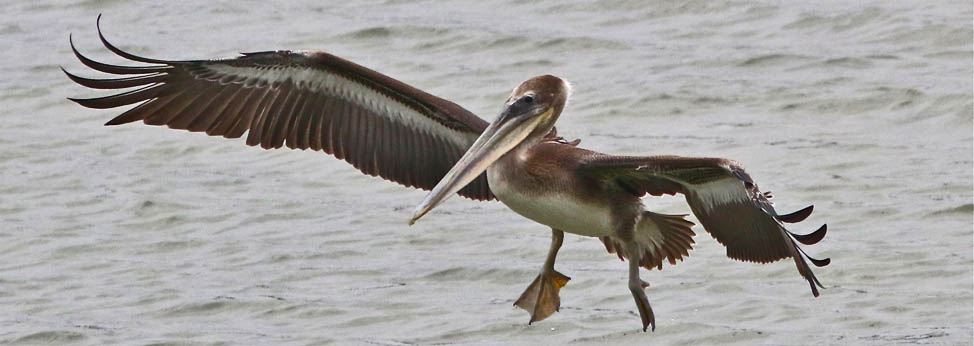 |
|
|
|
I live on Monterey Bay, California. Brown Pelican — featured in all the shots above, left, and below [the latter two from the same event] — is an iconic bird here. [It is also iconic elsewhere, serving, for example, as the State bird of Louisiana.] It is a salt-water pelican, restricted to the coasts of North and Central America, and feeds primarily by plunge-diving into the ocean. Here (left and below) scores of pelicans at Pt. Pinos seek to consume huge Humboldt Squid Dosidicus gigas that were washing ashore, possibly from the squid's consumption of fish and krill that had fed on toxic algal blooms. |
|
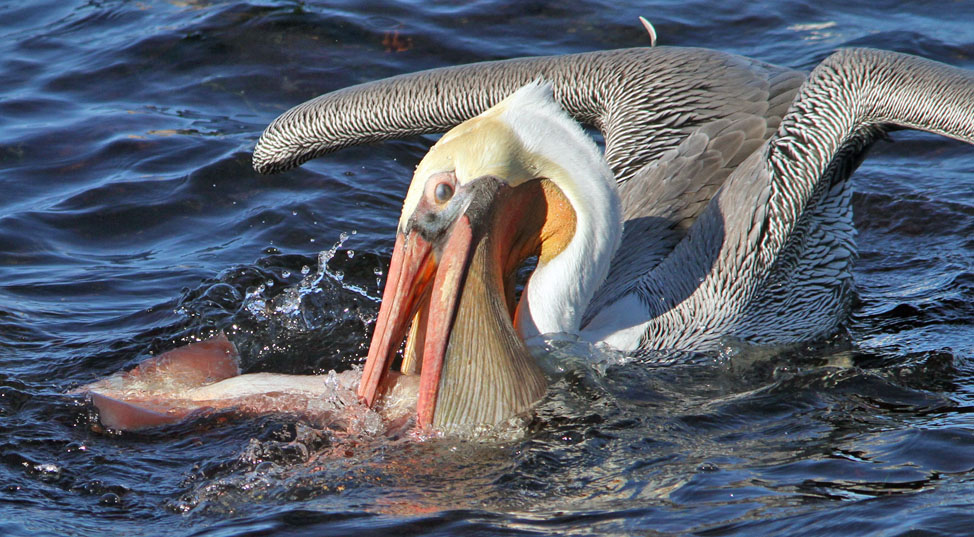 |
|
Brown Pelican often plunge-dives for fish or squid, as does the closely-related Peruvian Pelican Pelecanus thagus along the western South American coast. The six other species of pelicans are adapted best to freshwater, and the various white pelicans of the world often fish together in groups that corral their prey. The New World example is American White Pelican (below). These form a line to chase schools of small fish into the shallows, and then scoop them up liberally. |
|
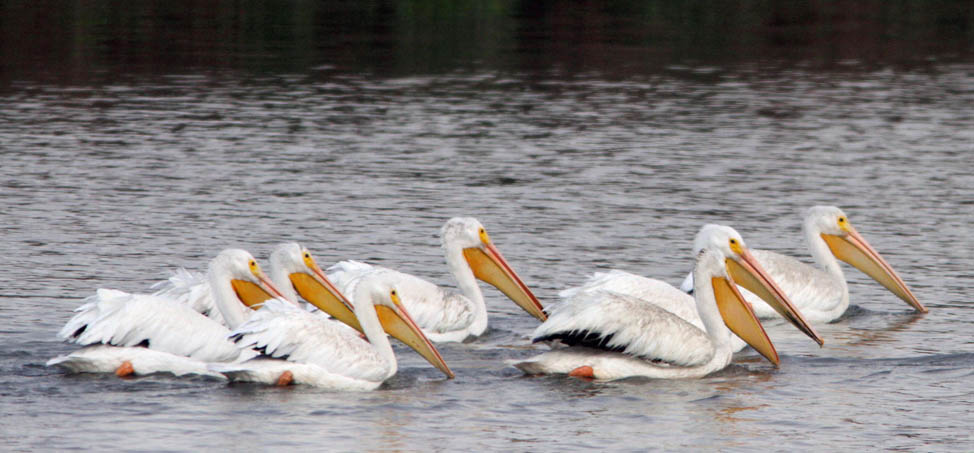 |
|
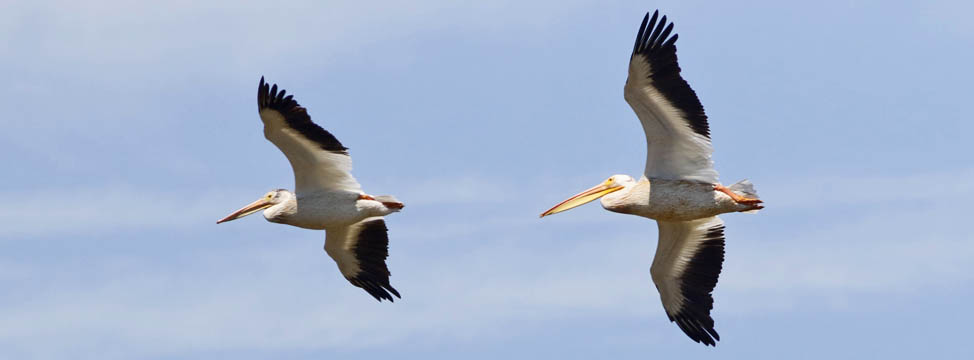 |
|
Pelicans are a very distinct group: all 8 species belong to a single genus Pelecanus. Fossils of pelicans go back 40 million years (Elliott 1992), so their feeding and breeding strategies have obviously been successful. There are pelicans on all the world's continents (except Antarctica). In plumage, foraging technique, and behaviors Great White Pelican of Eurasia and Africa (right) resembles American White Pelican, and these can be just as impressive in flight (right). Two other Eurasian pelicans — Dalmatian P. crispus and Spot-billed P. philippensis — are endangered by loss of habitat in southern Eurasia and southern Asia, respectively. Breeding colonies of all ground-nesting pelicans require protected islets away from predators. |
|
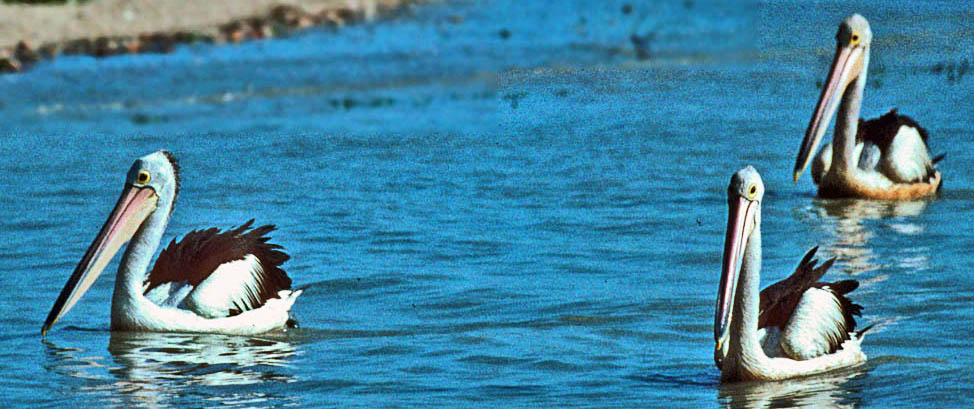 |
|
The pelican in Australia and southern New Guinea is Australasian Pelican (above). Adult Australasian Pelicans are said to have the longest bill of any bird on earth. Compared to other white pelicans they have much more black on upperwing, rump and tail. Australasian Pelican regularly forages on salt water just off the coast, or in estuaries, especially those with mangroves. In Africa, Pink-backed Pelican (below) often mixes with Great White Pelicans to form large aggregations on inland lakes. In the photo below, there is a young Great White Pelican (back row, right end, with lots of yellow-orange color on the underside of the bill) among the various Pink-backs in the shot. Pink-backed Pelican ranges to the Arabian Peninsula in addition to its wide sub-Saharan range in Africa. Its nesting behavior is unusual as many breeding colonies are composed of nest in trees, especially mangrove trees along the coast. At other sites colonies breed colonially in reeds or low bushes along waterfronts, or even on the ground on sandy islands. |
|
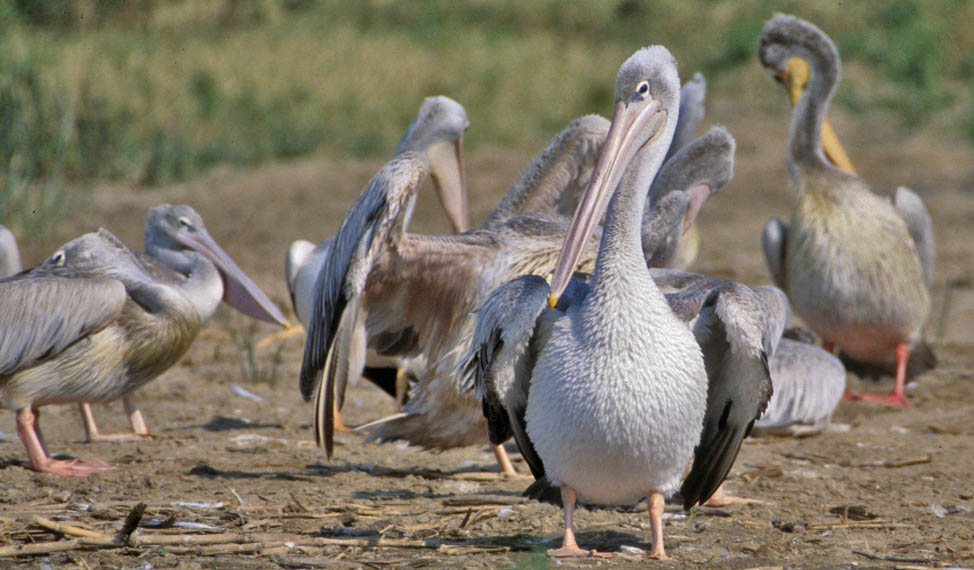 |
|
Photos: The squid-capturing Brown Pelican Pelecanus occidentalis was at Pt. Pinos, Monterey Co., CA, USA, on 24 Nov 2012, and the flying adult with youngsters was there on 14 Oct 2017. The group-feeding American White Pelican Pelecanus erythrorhynchos were at Zmudowski SB, Monterey Co., CA, USA, on 30 Aug 2014, and the two in flight were at Salinas River NWR, CA, USA, on 29 June 2019. The flying Great White Pelican Pelecanus onocrotalus was in Tarangire NP, Tanzania, on 9 June 2018. The three Australian Pelican Pelecanus conspicillatus were at Dayla, Papua, Indonesia, on the southern coast of New Guinea, on 9 Aug 1994. The roosting group of Pink-backed Pelican Pelecanus rufescens were at Queen Elizabeth II NP, Uganda, 24 July 2002. All photos © Don Roberson; all rights reserved. Bibliographic note: There is no "family book" per se but there are numerous coffee-table "survey" books that include pelicans along with other seabirds or marsh birds. An good introduction to the family, with incredible photos, is Elliott (1992). Literature cited:
|
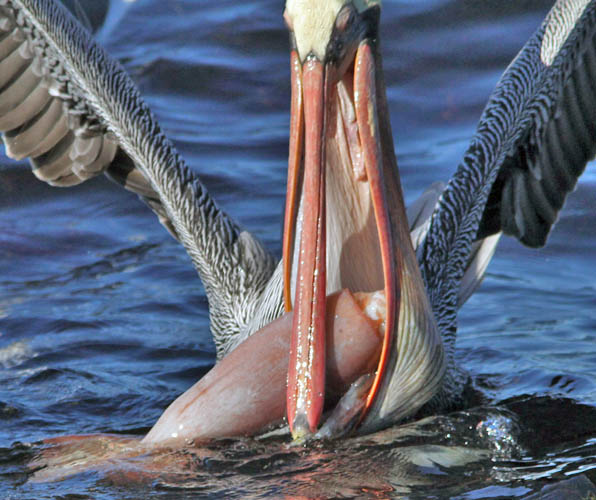 Pelicans
are famous for their beaks, which they fill with huge gulps of water,
strain out the liquid, and eat the remaining prey. This behavior is
forever memorialized in these lines by Dixon Lanier Merritt (1879-1972):
Pelicans
are famous for their beaks, which they fill with huge gulps of water,
strain out the liquid, and eat the remaining prey. This behavior is
forever memorialized in these lines by Dixon Lanier Merritt (1879-1972): Large birds like Brown Pelican
take multiple years to reach maturity. Each fall in Monterey Bay we see
adults (e.g., the white-headed top bird at left) and hope to see many
immatures (the dark-headed birds at left). Some years we saw many
youngsters but in other years the Mexican colonies fail.
Large birds like Brown Pelican
take multiple years to reach maturity. Each fall in Monterey Bay we see
adults (e.g., the white-headed top bird at left) and hope to see many
immatures (the dark-headed birds at left). Some years we saw many
youngsters but in other years the Mexican colonies fail.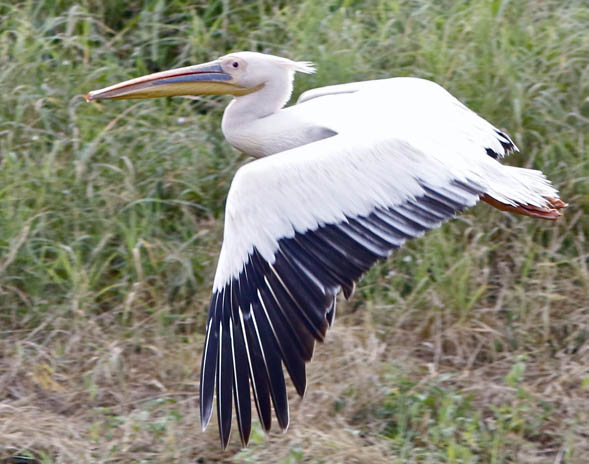 American White Pelicans
breed in sometimes huge colonies on shallow inland lakes or inland
saline seas. Adults have the odd bill protuberances in the nesting
season which drops off after eggs are laid. They migrate long distances
to these colonies in spring, and then disperse widely throughout the
continent. As pelicans are among the larger and heavier birds in the
world, they can be very impressive in flight (above, imm to left, adult
to right).
American White Pelicans
breed in sometimes huge colonies on shallow inland lakes or inland
saline seas. Adults have the odd bill protuberances in the nesting
season which drops off after eggs are laid. They migrate long distances
to these colonies in spring, and then disperse widely throughout the
continent. As pelicans are among the larger and heavier birds in the
world, they can be very impressive in flight (above, imm to left, adult
to right).